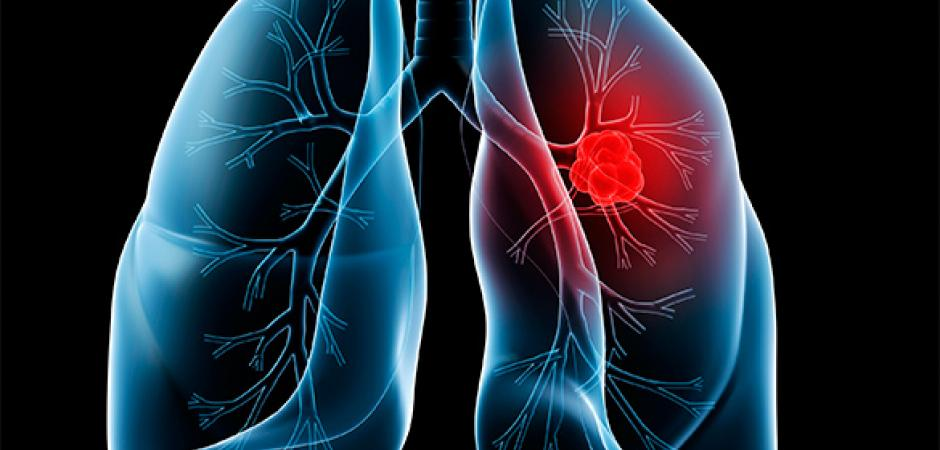
About Lung Cancer
Lung cancer occurs when cells in the lungs begin to grow and multiply uncontrollably, usually along the air passages. Lung cancer is the second most common cancer and accounts for 25% of all cancer deaths in the U.S., making it the leading cause of cancer deaths among men and women.
There are several types of lung cancer, but the most common are non-small cell lung cancer (NSCL) and small cell lung cancer (SCLC). NSCL is the most common and occurs mostly in smokers, but is also the most common type of lung cancer in non-smokers. SCLC tends to grow and spread faster than NSCL and has a higher chance of returning later in the patient’s life.
Causes & Risks
The leading cause of lung cancer is smoking tobacco. Other factors can contribute, and people who have never smoked can also get lung cancer. Risk factors include the following:
- Smoking tobacco
- Secondhand smoke
- Radon exposure
- Asbestos exposure
- Chemicals or carcinogens in the workplace
- Certain dietary supplements
- Arsenic in drinking water
- Previous radiation therapy to the lungs
- Air pollution
- Personal or family history of lung cancer
Signs & Symptoms
In most cases, symptoms won’t show up until the cancer has spread, but some people may notice symptoms early on.
- Cough that won’t go away
- Coughing up blood
- Chest pain that worsens with deep breaths, coughing or laughing
- Hoarseness
- Loss of appetite
- Unexplained weight loss
- Shortness of breath
- Fatigue
- Persistent bronchitis or pneumonia
- Wheezing
As the cancer spreads, there could be other symptoms such as the following:
- Bone pain
- Nervous system changes such as headaches, dizziness, balance problems or seizures
- Yellowing of the skin
- Swollen lymph nodes in the neck or collarbone
Screening
For patients at risk for lung cancer, a low dose CT scan (LDCT) can be performed to find any abnormal areas in the lungs that may be cancerous. For those at higher risk, it’s recommended to receive a LDCT scan annually for the best chance of finding cancers before symptoms start.
If a nodule is found during the LDCT, your doctor may recommend more imaging tests to get a better look or to see how it’s moving or growing overtime. Depending on the findings, the doctor may recommend a biopsy to get a sample of the tissue to determine if it’s cancerous. Your doctor will walk you through every step and keep you informed.
Treatment
Upon diagnosis, your doctor will present your case to tumor boards. In this conference, a group of 15-20 doctors who diagnose and treat cancer, including radiologists, pathologists, surgeons, radiation therapists, oncologists and geneticists will review your case and agree on the appropriate treatment. Presenting each case at a tumor boards conference helps to provide each patient with the best treatment plan and limit the number of times the patient goes to the operating room.
Treatment options include radiation therapy, surgery, chemotherapy, immunotherapy and others based on the case. You will discuss your treatment options with your doctor and have the chance to ask questions you may have.

